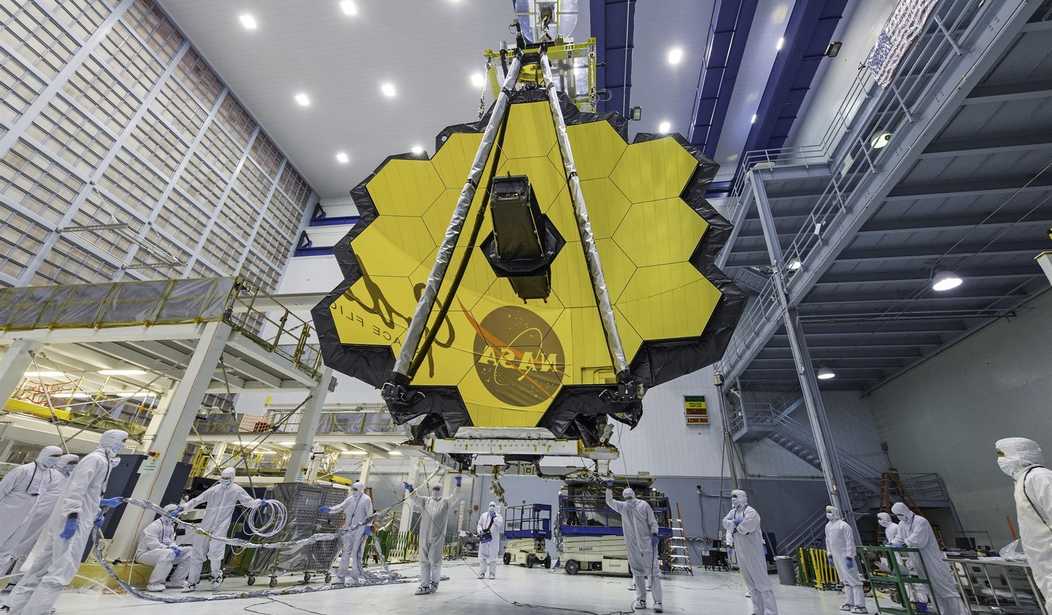As the days go by, the James Webb Space Telescope (JWST) continues to deliver the deepest and most immersive views of the universe that mankind has witnessed to date. It is also looking further back in time than we’ve ever seen before, bringing us images of the universe when it was in its relative infancy, less than a billion years after what scientists agreed was the time it came into being. But much of what is being seen is giving many astronomers pause. As Maggie Harrison at futurism.com puts it, Webb is seeing “stuff that shouldn’t be there.” One of the prime examples is found in those early galaxies I mentioned. Currently accepted theory suggests that the earliest star formations and nascent galaxies should have been small in size and rather chaotic in structure as the newly emerging matter performed a complicated dance driven by the gravitational pull being exerted by all of that matter. Instead, Webb is seeing huge, beautifully formed galaxies. But how did they form so quickly?
Over the past several weeks, NASA’s ultra-powerful James Webb Space Telescope (JWST) has allowed humankind some unprecedented glimpses into the farthest reaches of our universe. And unsurprisingly, some of these dazzling new observations have raised more questions than they’ve answered.
For a long time, for instance, scientists believed the universe’s earliest, oldest galaxies to be small, slightly chaotic, and misshapen systems. But according to the Washington Post, JWST-captured imagery has revealed those galaxies to be shockingly massive, not to mention balanced and well-formed — a finding that challenges, and will likely rewrite, long-held understandings about the origins of our universe.
“The models just don’t predict this,” Garth Illingworth, an astronomer at the University of California at Santa Cruz, told WaPo. “How do you do this in the universe at such an early time? How do you form so many stars so quickly?”
We previously looked at one astronomer’s theory suggesting that Webb’s findings point to the idea that the big bang never happened. But it’s been pointed out that Eric Lerner had held this theory for a long time and many astronomers disagree with him. While they may not understand what Webb is showing us yet, they disagree that it proves that the big bang never happened. At a minimum, there is plenty of disagreement and speculation going on in the scientific community.
But speaking strictly as a layman, I would argue that you can’t entirely discount one scientist’s theory without offering a replacement of your own that makes more sense. And whatever explanation you land on must be testable and repeatable if you want it to ever be considered anything more than “a theory.” Perhaps some middle ground will emerge. One astronomer who was interviewed on a recent podcast I listened to suggested that the big bang theory may still be valid, but we somehow just got the dates wrong. As in very, very, very wrong. If the universe is actually twice as old as the current theory suggests, there would have been plenty of time for large, stable galaxies to form.
But that introduces yet another puzzle. Stars have lifecycles just as plants and animals do. They come into existence and “live” for a period of time based on the amount of fuel (hydrogen) they possessed when they first ignited. Barring some massive infusion of new fuel along the line, they eventually burn out, with the largest ones exiting the stage in spectacular fashion as supernovae and the smaller ones dimming to be dwarfs, perhaps after a relatively brief period as a red giant, as our own sun is expected to do.
If most of the early stars formed 28 billion years ago, shouldn’t most of them have died out by now if they were as old as some of them appear to be in the JWST’s viewfinder? Apparently, the wreckage of dying stars and galaxies can collide to create new stars and there are still massive dust clouds out there in space incubating new stars. But it’s difficult for a layman like me to see how that gets us any closer to measuring the actual age of the universe or projecting how and when it may eventually end. It’s a great time to be alive if you are interested in these topics, though. I’m crossing my fingers and still hoping that the best from Webb is yet to come. Hundreds of the upcoming targets are exoplanets orbiting other stars and we may yet find biosignatures, if not technosignatures when Webb peers at their atmospheres closely.







Join the conversation as a VIP Member